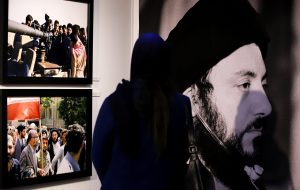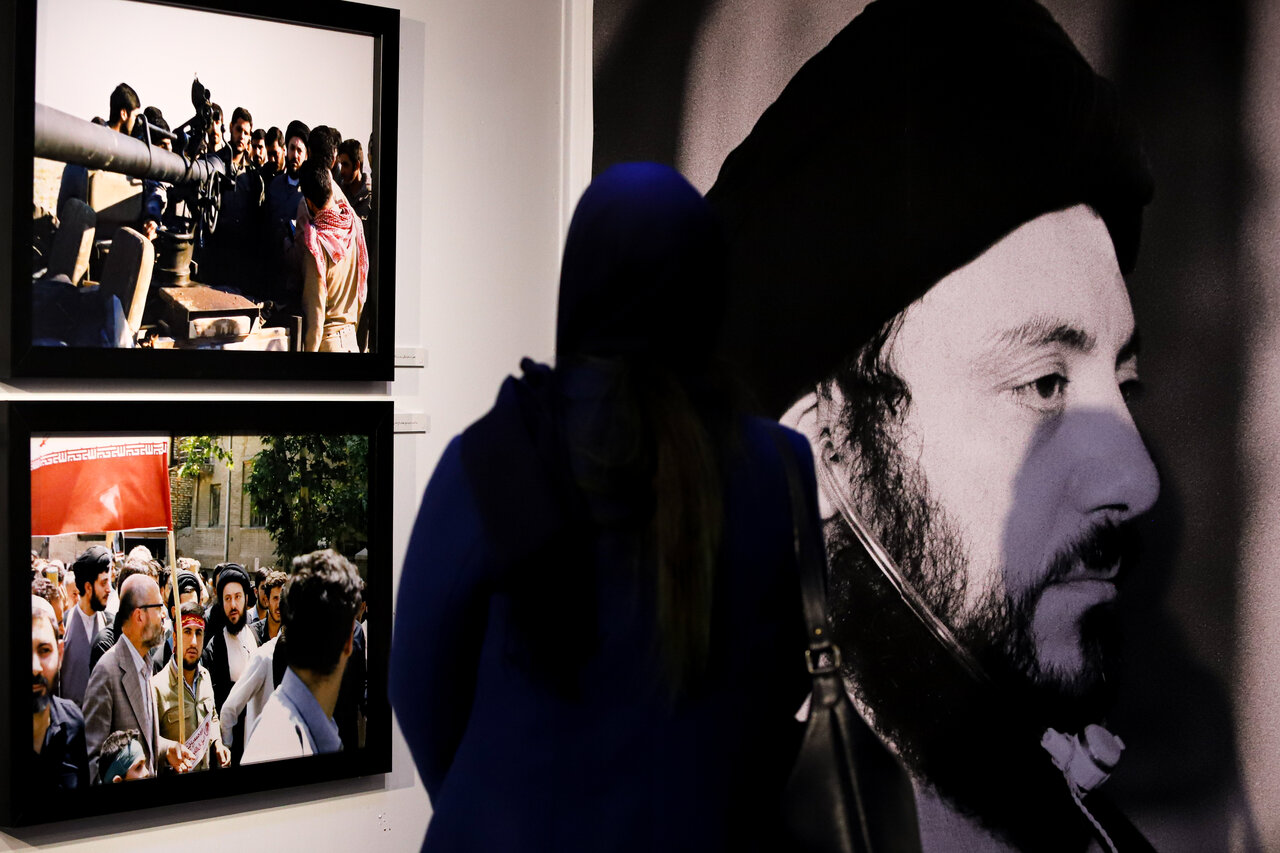Tehran photo exhibit highlights martyr Ayatollah Hakim’s life
TEHRAN- “On the Line of the Resistance” photo exhibition was inaugurated during a ceremony at Tehran’s Art Bureau on Sunday to mark the anniversary of the martyrdom of Ayatollah Sayyed Mohammad Baqir al-Hakim. Organized by the Al Hakim Martyrs Foundation in collaboration with the House of Photographers of Iran, the ceremony was attended by various


TEHRAN- “On the Line of the Resistance” photo exhibition was inaugurated during a ceremony at Tehran’s Art Bureau on Sunday to mark the anniversary of the martyrdom of Ayatollah Sayyed Mohammad Baqir al-Hakim.
Organized by the Al Hakim Martyrs Foundation in collaboration with the House of Photographers of Iran, the ceremony was attended by various dignitaries including martyr Hakim’s son Sayyed Haidar Hakim, Deputy Head of the International Affairs of the Art Bureau Seyyed Amir-Naser Javid Haeri, former Iranian ambassador to Iraq and the deputy coordinator of the IRGC Quds Force Major General Iraj Masjedi, and Director of Public Relations for the Presidential Office Habibollah Abbasi.
Cultural Attaché of Iraq in Iran Yasser Abdul Zahra Al-Hajjaj, the representative of the Supreme Islamic Council of Iraq in Iran Majid Ghamas, the deputy head of Hamas’s youth office Ashraf Awad, Iraqi ambassador to Iran Naseer Abdul Mohsen Abdullah Al-Kawari and the Iranian president’s special envoy for Afghanistan Hassan Kazemi Qomi were also among the notable figures attending the ceremony.
Speaking at the event, Javid Haeri said, “I owe my prayers and my faith to martyr Hakim. For years, we lived next door to martyr Hakim, and I spent my childhood with this esteemed martyr.”
“Had it not been for his warmth, kindness, and the ever-open arms of Ayatollah Hakim welcoming children at the mosque—had he not shown up half an hour before communal prayers to shower us with affection—we might not have found our way to the mosque so easily.”
He continued, “What we witness in the ‘On the Line of the Resistance’ exhibition is intricately linked to prayer. In these images, we can observe the prayer and worship of God in the life of martyr Hakim.”
“The House of Photographers is always open to our Iraqi brothers and sisters; this is your second homeland. Whenever you discern that our artistic community can assist in advancing the culture and civilization of Iraq, we are ready to help,” he added.
For his part Major General Masjedi remarked that the exhibition and its captivating images represent the remarkable character of Ayatollah Hakim. “I would like to express my gratitude to those who organized this exhibition,” he said.
“This exhibition immortalizes the name, memories, and life of the martyr for generations now and in the future, showcasing the character of martyr Hakim,” he added.
“It underscores the significance of art, as it holds a substantial place in today’s world, whether through cinema, film, photography, music, poetry, and more,” he noted.
Masjedi emphasized the necessity of producing a documentary about martyr Hakim’s life, referencing the recently aired film “Jamal” about Abou Mahdi al-Muhandis, stating, “We stand ready to assist in this endeavor.”
Masjedi also reflected on the moral qualities of martyr Hakim, describing him as simple, pious, hardworking, sincere, God-oriented, and amicable. “Since the time General Qassem Soleimani joined the Quds Force until his martyrdom, he had numerous meetings with Ayatollah Hakim and was always eager to visit him,” he shared.
At the end, Iraqi ambassador to Iran Naseer Abdul Mohsen Abdullah Al-Kawari expressed his satisfaction with the organization of this exhibition and said a few words about martyr Hakim.
Ayatollah Sayyed Mohammad Baqir al-Hakim, known as Shaheed al-Mehraab, was a prominent Iraqi Shia Islamic scholar and the leader of the Supreme Council for Islamic Revolution in Iraq (SCIRI). Born in 1939, he spent over 20 years in exile in Iran, returning to Iraq in 2003, after the U.S.-led invasion that toppled Saddam Hussein.
Upon his return, Ayatollah Hakim faced serious threats due to his advocacy for Shiite resistance against the Ba’ath regime. Tragically, on August 29, 2003, Ayatollah Hakim was killed in a devastating car bomb explosion outside the Imam Ali shrine in Najaf, which also claimed the lives of at least 75 other individuals.
In exile, Ayatollah Hakim became a vocal opponent of Saddam’s regime, establishing SCIRI aimed at advocating for Iraqi Shia interests. The group, under his guidance, gained military capability through the Badr Brigades, which conducted operations against Saddam’s forces.
Ayatollah Hakim’s assassination was linked to Abu Musab al-Zarqawi and Al-Qaeda operatives, leading to widespread protests against U.S. occupation during his funeral. His legacy remains significant in Iraq, where he is remembered for his commitment to Shia rights and his role in the tumultuous events of the early 21st century.
SAB/
